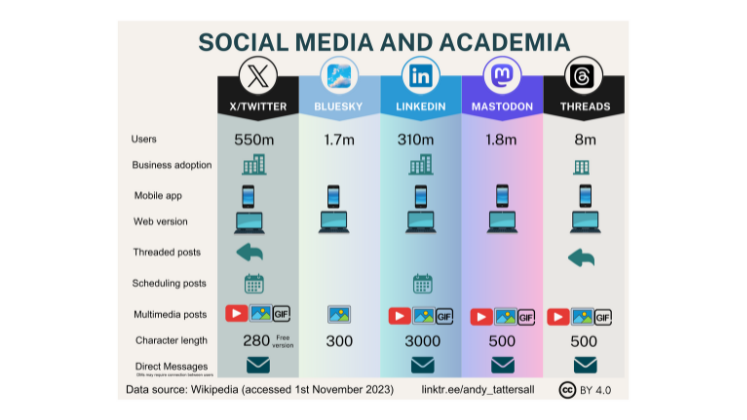As the landscape of social media is constantly shifting, and with many academics migrating from Twitter, LinkedIn has become an increasingly popular platform and is considered by many academics to be an essential tool. Discussing the recent trend for sharing images and stories that highlight vulnerability on the platform, Shani Orgad explores whether this is indicative of a new culture of self-promotion or a wider critique of working life.
Leena Yousefi, top lawyer and CEO of a Canadian law firm, shared a personal post about the debilitating symptoms of her pregnancy. Alongside a photo of her lying on the bed, one hand on her forehead and one on her tummy, she wrote:
 “I have been forced to lay on the bed in my work clothes before work in the morning, unable to move, think or function. I wake up in a constant state of chronic depression, nausea, aversions to everything, disabling migraines, a numbness to the world and lack of happiness”.
“I have been forced to lay on the bed in my work clothes before work in the morning, unable to move, think or function. I wake up in a constant state of chronic depression, nausea, aversions to everything, disabling migraines, a numbness to the world and lack of happiness”.
Yousefi’s post is just one example of the growing numbers of people sharing their pain and vulnerability on social media. It is a trend closely related to the increasing cultural and commercial emphasis on ‘authenticity‘ and rejection of the quest for perfection, seen in the rise of the 0.5 selfie, the popularity of the BeReal photo-sharing app and the recent ‘Things I’m ashamed to admit’ TikTok craze.
However, where you would probably not expect to find posts such as Yousefi’s is LinkedIn, the world’s largest professional online network with 830 million users.
Indeed, LinkedIn has consistently distinguished itself from platforms such as Instagram and TikTok, underscoring its “strictly business-oriented” focus for professional networking, and instructing its users to emphasise their skills, strengths, proficiency and “best” professional selves. There is even a LinkedIn guide advising on the “best” “business smiles” for members’ professional headshots.
However, in contrast to this self-promotion directive, LinkedIn users seem to be recently posting more frequently about their vulnerabilities, failures, and struggles. What kind of posts are users actually publishing and what is the significance of this apparent vulnerability turn on the professional networking platform? In analysing posts about personal experiences of overwork, stress, burnout, being laid off, workplace discrimination, bullying, anxiety and depression, published by users at different career stages and across different professions, I identified three main ‘genres’.
Triumph over tragedy
Posters are sharing their vulnerabilities to emphasise how they have overcome them and subsequently gone through self-growth. Some users post their “perfect” professional headshots juxtaposed with an image of their “authentic,” “vulnerable” self, for example, selfies that deliberately make visible their exhaustion, show them lying in bed with bags under their eyes. Often, these images are accompanied by motivational statements highlighting the importance of embracing vulnerability and self-belief. Vulnerability, here, is a vector for resilience. It can be celebrated as long as the person has triumphed over the vulnerable “phase” and, through the use of individualized and psychologized tools, has become a self-assured, resilient professional.
Snap
These posts (like Yousefi’s) focus on the breaking point, when the user ‘snaps’, when she can and is no longer willing to cope with a toxic overwork culture (I use ‘she’ because most posters identify as women). Snap posts often include images of the author in tears, reinforced by texts encouraging readers to “listen to themselves” and allow themselves to be vulnerable, or by photographs (often selfies) of the poster in a hospital, wearing a hospital gown and connected to medical equipment.
On a platform and in work cultures where, until recently, the imperative has been to represent oneself as healthy, successful, productive, independent, passionate, and confident, these images are a quite radical break. They reveal conditions and experiences that are often silenced and invisible in the workplace. They foreground fragility and pain in work environments that mostly encourage their workers to hide and deny signs of vulnerability or risk losing their jobs.
Subversive commentary on self-promotion
Posts in this genre tend to use subversive, often playful language and forms to criticise the pressure to constantly promote and brand oneself generally, and on LinkedIn in particular. Some posts adopt the hyperbolic phrases frequently used in LinkedIn self-promotional messages, to celebrate professional achievements. For example, they start with “I’m truly honoured and humbled to announce that…” or “I’m absolutely thrilled to share the news that…”, but go on to announce not a professional achievement, but that the poster is now unemployed, has been laid off or has had a job application rejected and has no idea what the immediate or long-term future holds. These posts underline the pernicious demands and pressures of the self-promotion culture, offering a sarcastic nod to LinkedIn’s culpability in this unrelenting culture.
Posting vulnerability: a critique or an iteration of self-promotional culture?
At first, posting about vulnerability on LinkedIn might seem antithetical to LinkedIn’s essence, to self-promote one’s professional strengths, skills and achievements. However, in some ways, vulnerability has become an iteration of digital self-promotion. Vulnerability posts tend to attract attention, likes, shares and comments, and are consequently promoted by LinkedIn’s algorithm. For example, a LinkedIn member who published a weeping selfie with a caption referring to anxiety and the challenges of a precarious job, received over 2.7 million impressions and, according to the poster, led to numerous business opportunities, new connections and followers. Indeed, LinkedIn and marketing companies recommend “being vulnerable” to optimise engagement on the platform. So, while expressions of vulnerability on LinkedIn are partly a critical reaction to an insecure labour market, they are concurrently an instrument to survive amidst these forces of precarity, by garnering attention and reputation.
So, while expressions of vulnerability on LinkedIn are partly a critical reaction to an insecure labour market, they are concurrently an instrument to survive amidst these forces of precarity, by garnering attention and reputation.
At the same time, the turn to posting vulnerability on LinkedIn reflects and reinforces the growing disillusionment with hyper-productive work cultures and digital platforms and their self-promotion pressures. It expresses refusal of demands to work punishing hours, with passion and grit, in toxic environments that deny pain and vulnerability. Instead, LinkedIn users are emphasizing that vulnerability and slowing down are modes of resistance to the pressure imposed by hyper-productivity and a digital culture of self-promotion, and an algorithmic logic that supports and bolsters this culture.
Nevertheless, although vulnerability posts expose systemic issues, such as toxic and unequal work structures, they commonly recommend ad-hoc instrumental and individualised solutions, such as “Seven tips for how to identify burnout in your employees and help them manage stress”. If they make a call for change, it is personal and individualized, but rarely structural. Also and crucially, while vulnerability may be trending, not everyone can afford to be vulnerable on LinkedIn (or other platforms). As Yousefi acknowledges in her post, she decided to share her vulnerability to connect with many who go through similar experiences but, unlike her, “couldn’t speak up for fear of sounding ‘weak’ or jeopardizing their job”.
This post draws on the author’s article, Posting vulnerability on LinkedIn, published in New Media & Society.
The content generated on this blog is for information purposes only. This Article gives the views and opinions of the authors and does not reflect the views and opinions of the Impact of Social Science blog (the blog), nor of the London School of Economics and Political Science. Please review our comments policy if you have any concerns on posting a comment below.
Image Credit: Adapted from Drawlab19 on Shutterstock.








3 Comments